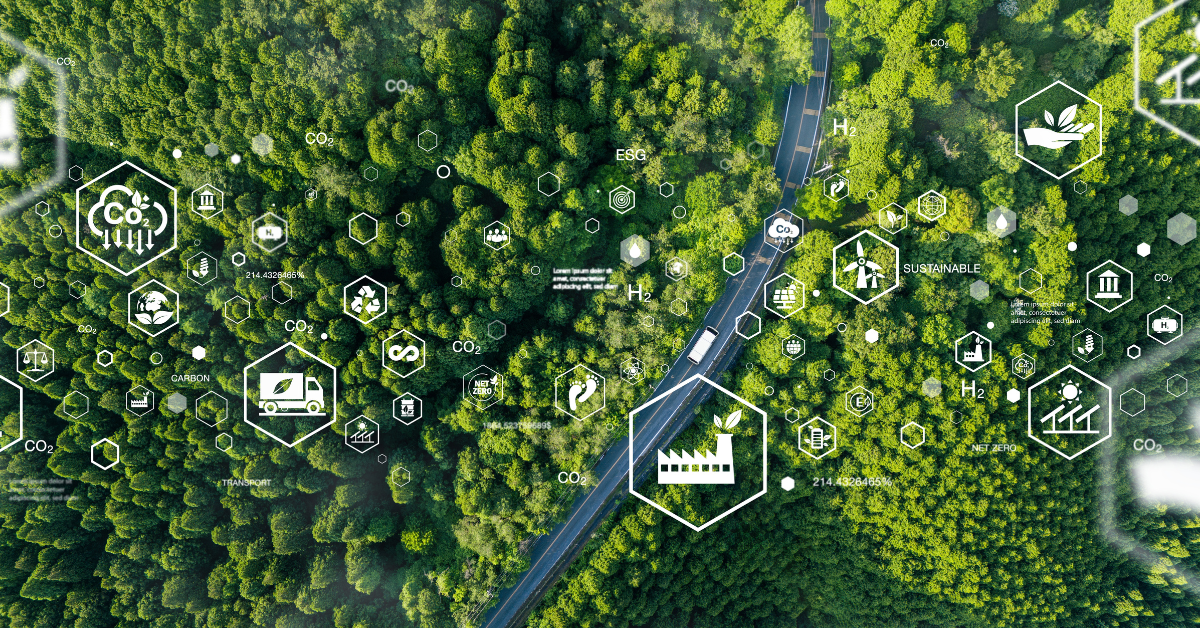
Learn how to manage a sustainable transition effectively with four key steps that covers essential strategies for driving sustainable change in your organization.
The urgency of transitioning to a sustainable paradigm for business and society is more pronounced than ever.
Environmental degradation, climate change, and social inequalities are pushing businesses to rethink their operational models in order to adapt to a changing environment and stringent regulations.
The stakes are high: companies face not only regulatory pressures due to the adoption of directives such as the Corporate Sustainability Due Diligence Directive and Corporate Sustainability Reporting Directive but also growing expectations from consumers, investors, and society at large to act responsibly and sustainably.
In this context, Sustainable transition management provides a structured approach to achieving long-term sustainability goals.
How does a company embark on a sustainable transition and which steps should it follow?
Let’s find out.
Four Steps to manage your company’s sustainable transition
Guiding your company through a sustainable transition requires a structured approach that encompasses strategic planning, stakeholder engagement, implementation, and institutionalization.
This process addresses environmental challenges and integrates social and economic considerations, ensuring a holistic and resilient shift towards sustainability.
Below, we outline four essential steps to manage your company's sustainable transition effectively.
Step 1: Establish a Vision and Strategy
The first step in managing a sustainable transition is to establish a clear vision and strategy which involves setting long-term sustainability goals that align with the organization's mission and values. Visioning should include participatory foresight, where stakeholders collaboratively envision desirable futures and develop strategic pathways to achieve them in a process that helps create a shared understanding and commitment among all participants.
A well-defined strategy should consider planetary boundaries, societal challenges, and emerging trends while considering the needs of various internal and external stakeholders. Tools such as scenario planning and materiality analysis can be instrumental in mapping out and prioritizing the steps needed to reach the envisioned future.
Step 2: Engaging stakeholders is critical for the success of a sustainable transition.
This step involves identifying and involving all relevant stakeholders, including employees, customers, suppliers, and the broader community, to effectively engage them to foster collaboration and ensure that diverse perspectives are considered in decision-making processes.
Building multi-actor networks and creating platforms for continuous dialogue and cooperation can significantly enhance the transition process by facilitating knowledge sharing, innovation, and the co-creation of solutions tailored to different stakeholders' unique needs and contexts. Inclusive participation helps build trust and resilience, which are essential for sustaining long-term change.
Furthermore, fostering collaboration through participatory methods can enhance the adaptability and responsiveness of the organization to emerging sustainability challenges.
Step 3: Implement Change and Monitor Progress
Once a vision and strategy are in place and stakeholders are engaged, the next step is to implement the planned changes in a phase that requires detailed action plans, resource allocation, and the establishment of governance structures to oversee the implementation process.
Monitoring and evaluation are crucial components of this step. Regularly tracking progress against set targets allows organizations to identify areas for improvement and make necessary adjustments.On the other hand, identifying key performance indicators (KPIs) related to environmental, social, and economic impacts helps maintain focus and accountability.
Continuous learning and adaptation are essential, as sustainable transitions often involve navigating complex and evolving challenges. In this context, advanced data analytics and digital tools can aid in timely interventions to optimize outcomes.
Step 4: Institutionalize Sustainability and Scale Up
The final step in managing a sustainable transition is to institutionalize sustainability practices within the organization and scale them up.
To achieve this, companies should align their policies, procedures, and incentives with sustainability goals to ensure that every aspect of the organization supports and drives sustainability initiatives. For instance, integrating sustainability metrics into performance evaluations and reward systems can motivate employees to prioritize sustainable practices in their daily activities.
Scaling up successful initiatives amplifies their impact across the organization and beyond. This can be done by leveraging partnerships with other organizations, industry groups, and governmental bodies to advocate for supportive policies and create a broader impact. Investment in capacity-building, such as training programs and resources, can enhance the skills and knowledge needed to support sustainable practices.
Moreover, sharing best practices and success stories within and outside the organization can inspire and guide others on their sustainability journeys. Establishing a culture of continuous improvement is crucial, where feedback loops are used to refine and enhance sustainability practices.
Lastly, effective institutionalization also involves creating robust governance structures that oversee sustainability initiatives. This includes forming dedicated sustainability committees at the board level and ensuring executive leadership is actively involved in driving the sustainability agenda.
Conclusions
Managing a sustainable transition is a complex but essential process for modern organizations. Incorporating sustainability into an organization's fabric is not just an ethical imperative; it is a strategic advantage that can lead to competitive differentiation and long-term success in an increasingly sustainability-conscious world.
As more businesses recognize the interconnectedness of economic performance and environmental stewardship, the shift toward sustainability becomes a catalyst for broader systemic change.



